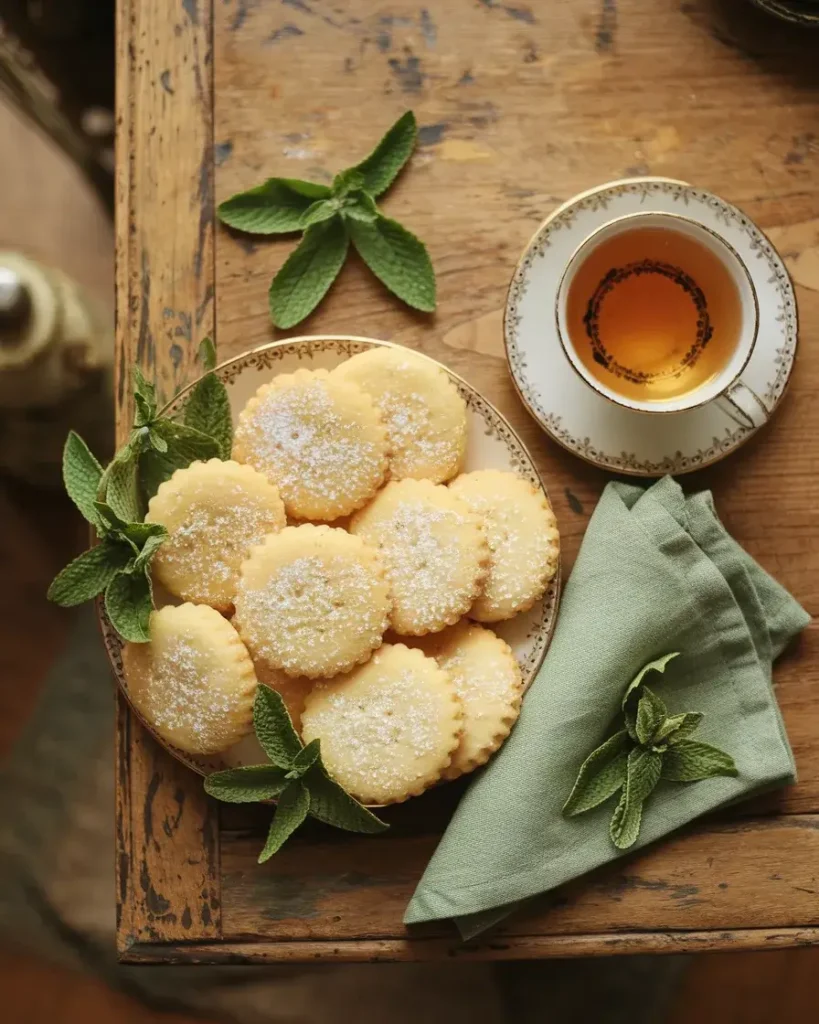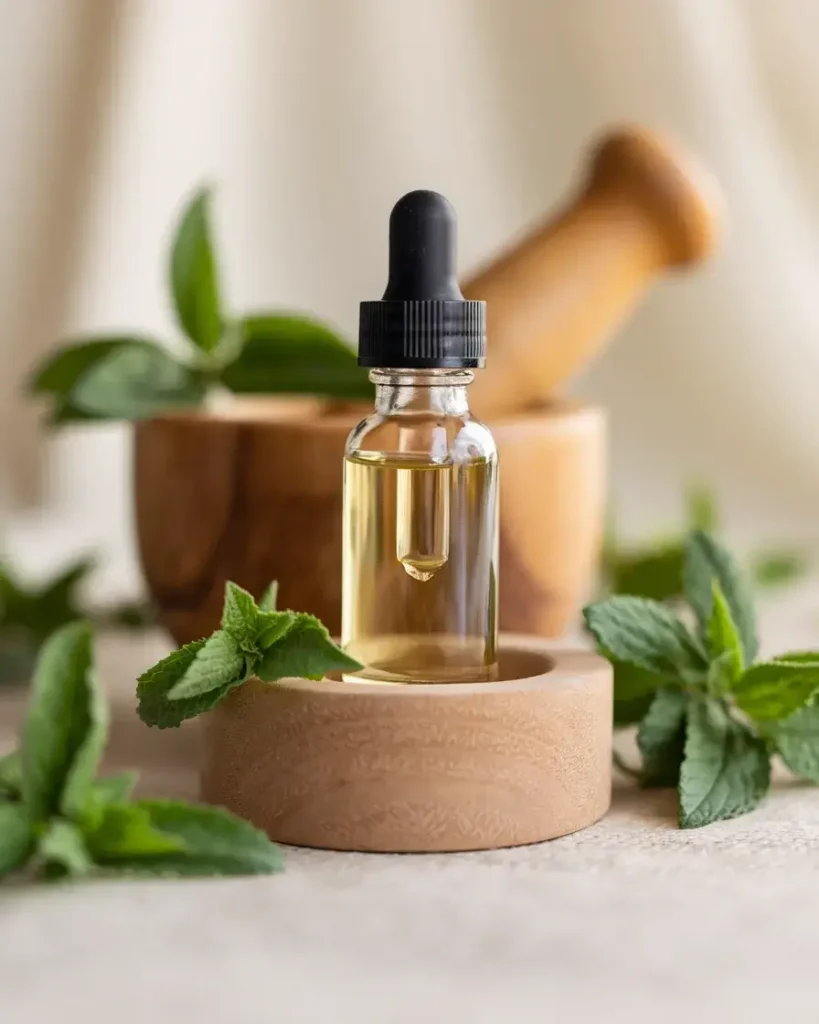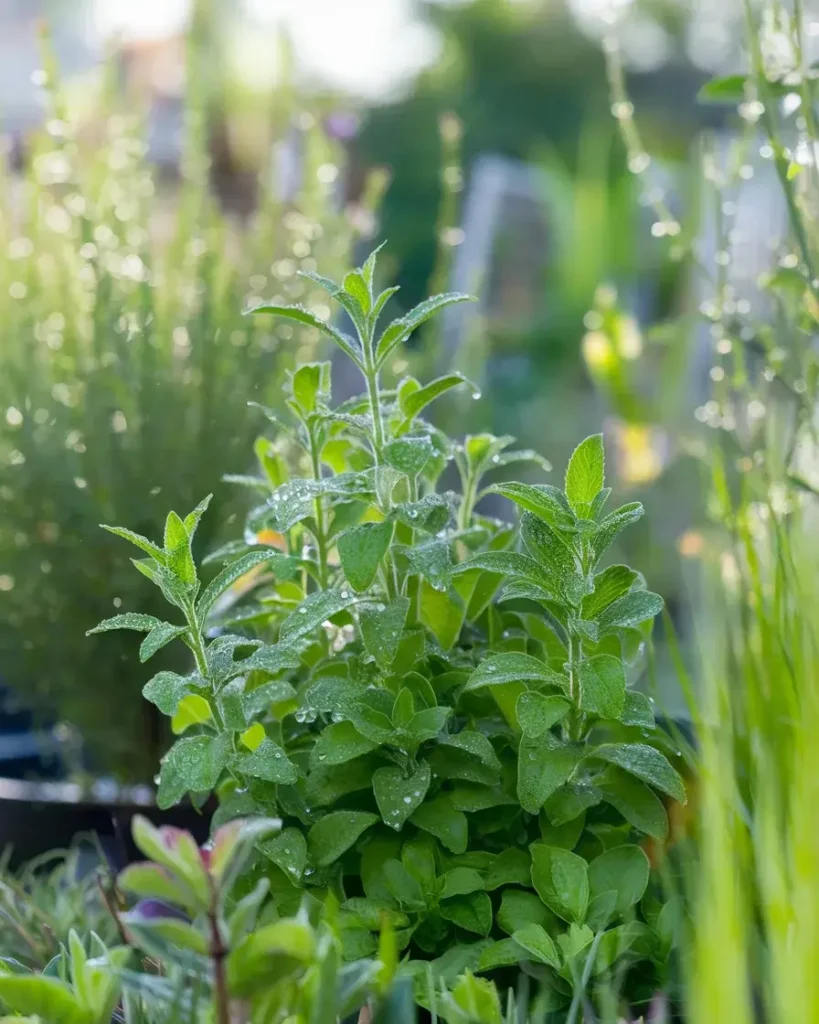Introduction
Lemon balm recipes, a fragrant herb from the mint family, has been cherished for centuries for its medicinal, culinary, and aromatic properties. With its delightful citrusy scent and soothing qualities, this humble plant finds its way into refreshing drinks, savory dishes, sweet treats, and even skincare remedies. Whether you’re growing lemon balm in your backyard or foraging for it in the wild, you’ll be amazed at the range of recipes it can inspire.
This article will guide you through some of the best lemon balm recipes to transform your cooking, self-care, and even health routines. From invigorating drinks to unique desserts, and from flavorful dinners to calming remedies, there’s something for everyone to try. So, let’s dive right in!
Introduction to Lemon Balm Recipes
What is Lemon Balm?
Lemon balm recipes (Melissa officinalis) is a perennial herb that grows abundantly in temperate regions. Belonging to the mint family, its bright green leaves exude a fresh, lemony aroma when crushed. This herb has been a staple in herbal medicine and culinary traditions for its calming effects and zesty flavor.
Benefits and Uses of Lemon Balm recipes
Lemon balm recipes is not just a culinary delight—it’s also a medicinal powerhouse. It’s widely known for its ability to reduce anxiety, improve sleep, and boost digestion. Packed with antioxidants, it can help combat inflammation and support the immune system. Its antiviral properties even make it an excellent natural remedy for cold sores.
Why Lemon Balm is a Kitchen Essential
Cooking with lemon balm adds a fresh, citrusy twist to everyday meals and beverages. Its subtle flavor pairs beautifully with both sweet and savory dishes. From lemon balm recipes like teas and cocktails to baked goods and sauces, this herb can elevate your culinary creations while imparting a hint of wellness.
Refreshing Lemon Balm Drinks

Lemon balm is a perfect addition to beverages, offering a light, citrusy flavor that’s both refreshing and soothing. From teas to cocktails, these lemon balm recipes are sure to delight your taste buds.
Lemon Balm Iced Tea Recipe
Start your day with a cooling iced tea infused with fresh lemon balm. To prepare, steep a handful of fresh lemon balm leaves in hot water for 10 minutes. Then, strain, add a touch of honey or lemon juice, and chill it in the fridge. Serve over ice for a perfect summer drink. This lemon balm recipes highlights the herb’s versatility, and the tea’s herbal undertones pair beautifully with a splash of green tea or mint.
How to Make Lemon Balm Lemonade
For a zesty twist on classic lemonade, add lemon balm! Blend fresh lemon balm leaves with lemon juice and water, then strain the mixture. Sweeten it with honey or simple syrup, and you’ve got a vibrant drink perfect for picnics. This lemon balm recipe also doubles as a refreshing base for cocktails.
Crafting Honey Lemon Balm Spritzer and Cocktails
If you’re hosting friends, a honey lemon balm spritzer is a crowd-pleaser. Combine sparkling water, honey, and lemon balm simple syrup for a bubbly treat. Want something stronger? Try a lemon balm martini or mojito. Muddle lemon balm leaves with sugar and lime, add your favorite spirit, and top with soda water for a lively drink. These lemon balm recipes are perfect for adding a citrusy herbal twist to any gathering.
Lemon Balm Simple Syrup: A Versatile Add-On
Making lemon balm simple syrup is quick and easy. Combine equal parts sugar and water with a handful of lemon balm leaves. Simmer the mixture, then strain and cool. Use this syrup to sweeten iced tea, drizzle over desserts, or stir into cocktails for a sweet herbal kick.
Sweet Treats with Lemon Balm
Lemon balm brings a subtle citrusy twist to desserts, making it a fantastic ingredient for baked goods and sweets. These lemon balm recipes will satisfy your sweet tooth while introducing a hint of herbal charm.
Blueberry and Lemon Balm Ice Cream
Who doesn’t love ice cream? Blend fresh lemon balm leaves with cream, sugar, and blueberries for a unique frozen treat. Churn the mixture in an ice cream maker or freeze it in molds for an easy, homemade dessert. The bright flavors of lemon balm and berries complement each other perfectly.
Baking Lemon Balm Shortbread Cookies

Lemon balm recipes for shortbread cookies are buttery and fragrant. To make these, chop fresh lemon balm finely and mix it into your favorite shortbread dough. The herb adds a light citrus flavor that balances the sweetness. Pair these cookies with lemon balm tea for an afternoon treat.
Lemon Balm Jelly for Toast and More
Homemade lemon balm jelly is a great way to preserve the herb’s essence. Simmer lemon balm leaves with sugar and pectin to create a jelly that spreads beautifully on toast or scones. This recipe is also an excellent topping for cheesecakes or pastries.
Lemon Balm Bundt Cake: A Show-Stopping Dessert
For a dessert that impresses, bake a lemon balm bundt cake. Infuse the batter with finely chopped lemon balm, and glaze the finished cake with lemon balm syrup. This cake is moist, aromatic, and bursting with citrus flavor—ideal for celebrations or casual gatherings alike.
Savory Dishes Infused with Lemon Balm
Lemon balm isn’t just for sweet treats and drinks—it shines in savory recipes too. Its mild citrus flavor pairs beautifully with herbs, cheeses, and even meats. Here are some lemon balm recipes to try in your next meal.
Lemon Balm and Chive Drop Biscuits
Soft, flaky drop biscuits are even better when you add fresh herbs. Stir chopped lemon balm and chives into your biscuit dough before baking. These biscuits make an excellent side for soups, salads, or roasted chicken. Plus, the herbaceous flavor enhances simple dishes with minimal effort.
Fava Bean and Feta Salad with Lemon Balm Salsa Verde
For a light, flavorful dish, prepare a fava bean and feta salad. Drizzle it with a vibrant salsa verde made by blending lemon balm, olive oil, garlic, and a splash of lemon juice. This tangy dressing also works well over roasted veggies or grilled fish.
Creating Lemon Balm Recipes Pesto and Vinaigrette
Lemon balm pesto is a unique twist on the classic recipe. Combine lemon balm, basil, pine nuts, garlic, and olive oil in a food processor. Spread it over pizza, mix it into pasta, or use it as a marinade for meats. Similarly, whisking lemon balm into vinaigrette creates a refreshing salad dressing with a citrusy kick.
Main Dishes: Roasted Lemon Balm Chicken and Salmon en Papillote
Impress your dinner guests with lemon balm chicken. Rub chicken thighs with a blend of lemon balm, olive oil, and garlic before roasting them to golden perfection. For a lighter option, bake salmon fillets en papillote with lemon balm, dill, and thin lemon slices. The aromatic herbs infuse the fish with flavor, creating a delightful meal.
Lemon Balm for Bath and Body
In addition to being a culinary herb, lemon balm offers soothing and healing benefits for the skin and hair. These DIY recipes will help you incorporate lemon balm into your self-care routine.
Making Lemon Balm Bath Melts for The Skin
Treat yourself to a calming soak with homemade lemon balm bath melts. Combine cocoa butter, shea butter, and dried lemon balm leaves. Let the mixture solidify in molds, then add one to your bathwater. These melts nourish dry skin while releasing a relaxing aroma.
DIY Lemon Balm Soap and Shampoo Recipes
Lemon balm soap is gentle yet effective for cleansing. Infuse olive oil with dried lemon balm, then use it as a base for cold-process soap. For a herbal shampoo, brew a strong tea with fresh lemon balm and mix it into a mild shampoo base. Both products leave your skin and hair refreshed and lightly scented.
Lemon Balm Hair Rinse for Oily Hair
If you struggle with oily hair, a lemon balm rinse can help. Steep a handful of fresh leaves in hot water until the tea cools, then strain. Use the rinse after shampooing to reduce oiliness and leave your hair shiny and manageable.
For more herbal-inspired recipes, visit the Flavor Festivity blog for creative culinary ideas that are sure to inspire your next meal or DIY project!
Medicinal Remedies with Lemon Balm
Lemon balm is celebrated for its calming and healing properties, making it a go-to herb in herbal medicine. These lemon balm recipes offer natural solutions for everyday ailments, from stress relief to skin care.
Crafting Lemon Balm Lip Balm for Cold Sores
Lemon balm’s antiviral properties make it a natural remedy for cold sores. To create a soothing lip balm, melt beeswax, coconut oil, and shea butter together. Stir in lemon balm-infused oil and pour the mixture into small containers. Once solid, apply this balm to cold sores to help them heal faster.
DIY Herbal Salve with Lemon Balm Recipes
An herbal salve is a versatile remedy for dry skin, minor cuts, and bug bites. Start by infusing olive oil with dried lemon balm. Mix the strained oil with melted beeswax, then add a few drops of essential oils like lavender or tea tree. Pour it into tins and allow it to set. Keep a jar handy for quick relief when needed.
Lemon Balm Tincture: Relief Made Simple

For a natural way to calm your nerves, make a lemon balm tincture. Fill a jar with fresh lemon balm leaves and cover them with high-proof alcohol. Let it sit in a cool, dark place for several weeks, then strain. Just a few drops under the tongue can help ease anxiety and promote relaxation.
Antiviral Lemon Balm Syrup with Honey and Ginger
Combine the healing powers of lemon balm, honey, and ginger in a homemade syrup. Simmer lemon balm leaves and sliced ginger in water until reduced, then strain and stir in honey. Store the syrup in a jar and take a spoonful daily to boost immunity and soothe sore throats.
Growing and Harvesting Lemon Balm
Growing lemon balm at home is not only simple but also rewarding. This hardy herb thrives in various climates and requires minimal care. With a little effort, you can have a steady supply for your favorite lemon balm recipes.
How to Grow Lemon Balm in Your Backyard
Lemon balm grows best in well-drained soil with plenty of sunlight. Plant it in spring, either from seeds or cuttings. Water it regularly, but avoid overwatering, as this can cause root rot. Once established, it will grow back every year, making it a long-term addition to your herb garden.
Tips for Harvesting and Storing Lemon Balm Recipes
Harvest lemon balm leaves when the plant is mature, usually just before it flowers. This is when the oils are most concentrated, giving the leaves their strongest flavor and aroma. To store, dry the leaves in a cool, dark place, then keep them in airtight containers for later use in teas, tinctures, or cooking.
Sustainably Foraging for Wild Lemon Balm
If you don’t grow lemon balm yourself, you can forage for it in the wild. Look for its signature square stems and lemony scent in fields or gardens. Remember to harvest responsibly by taking only what you need and leaving enough for the plant to thrive.

For additional herbal growing tips, check out the Flavor Festivity blog for articles on cultivating herbs and creating flavorful dishes.
FAQs About Lemon Balm Recipes
Lemon balm is a versatile herb, but it’s natural to have questions about how to use it. Below are answers to some of the most common queries about lemon balm and its many uses.
What Can You Do with Fresh Lemon Balm?
Fresh lemon balm can be used in countless ways. Add it to teas, salads, or cocktails for a refreshing citrusy touch. You can also blend it into pesto, infuse it into syrups, or use it as a garnish for desserts and main dishes. Its bright, zesty flavor works beautifully in many lemon balm recipes.
Does Lemon Balm Help Lose Belly Fat?
While lemon balm isn’t a magic weight-loss herb, its calming properties may indirectly support weight management. By reducing stress, it could help minimize stress-related cravings or overeating. Pairing lemon balm tea with a healthy diet and exercise routine might contribute to overall wellness.
What Is Lemon Balm Most Commonly Used For?
Lemon balm is best known for its calming effects, often used to ease anxiety, improve sleep, and support digestion. It’s also a popular ingredient in teas, tinctures, and lemon balm recipes. Additionally, its antiviral properties make it a go-to herb for soothing cold sores and boosting immunity.
Can You Eat Lemon Balm Leaves Raw?
Yes, you can eat lemon balm leaves raw! Their mild, lemony flavor makes them perfect for fresh salads, garnishes, or sandwiches. However, their flavor is more subtle than other herbs, so they’re best used in generous amounts for a noticeable taste.
Who Should Not Drink Lemon Balm Tea?
While lemon balm tea is safe for most people, those who are pregnant, nursing, or on medications like sedatives or thyroid treatments should consult a healthcare provider before using it. Lemon balm might also cause mild reactions in rare cases, so it’s wise to try a small amount first.
What Part of Lemon Balm Is Edible?
The leaves are the most commonly used part of lemon balm and can be eaten fresh, dried, or cooked. While the stems are edible, they’re usually discarded due to their tougher texture. Focus on the tender, fragrant leaves for the best results in your lemon balm recipes.
Conclusion and Final Thoughts
Lemon balm is a truly remarkable herb with endless possibilities. From soothing teas and delightful desserts to savory dishes and homemade remedies, its uses span far and wide. These lemon balm recipes showcase just how versatile and beneficial this herb can be.
In cooking, lemon balm adds a fresh citrusy note that elevates any dish. Its mild flavor makes it easy to experiment with, whether you’re preparing a light salad, baking cookies, or crafting a cocktail. Meanwhile, its calming properties make it a perfect addition to teas, tinctures, and wellness routines.
By growing lemon balm at home or foraging responsibly, you can enjoy a steady supply of this incredible herb year-round. Incorporate it into your everyday life, and you’ll quickly see why it has been cherished for centuries.
For more updates, community discussions, and fresh ideas, join our Facebook Page here to connect with like-minded herb enthusiasts and share your favorite lemon balm recipes!
Thank you for reading, and may your adventures with lemon balm be as refreshing as the herb itself!

